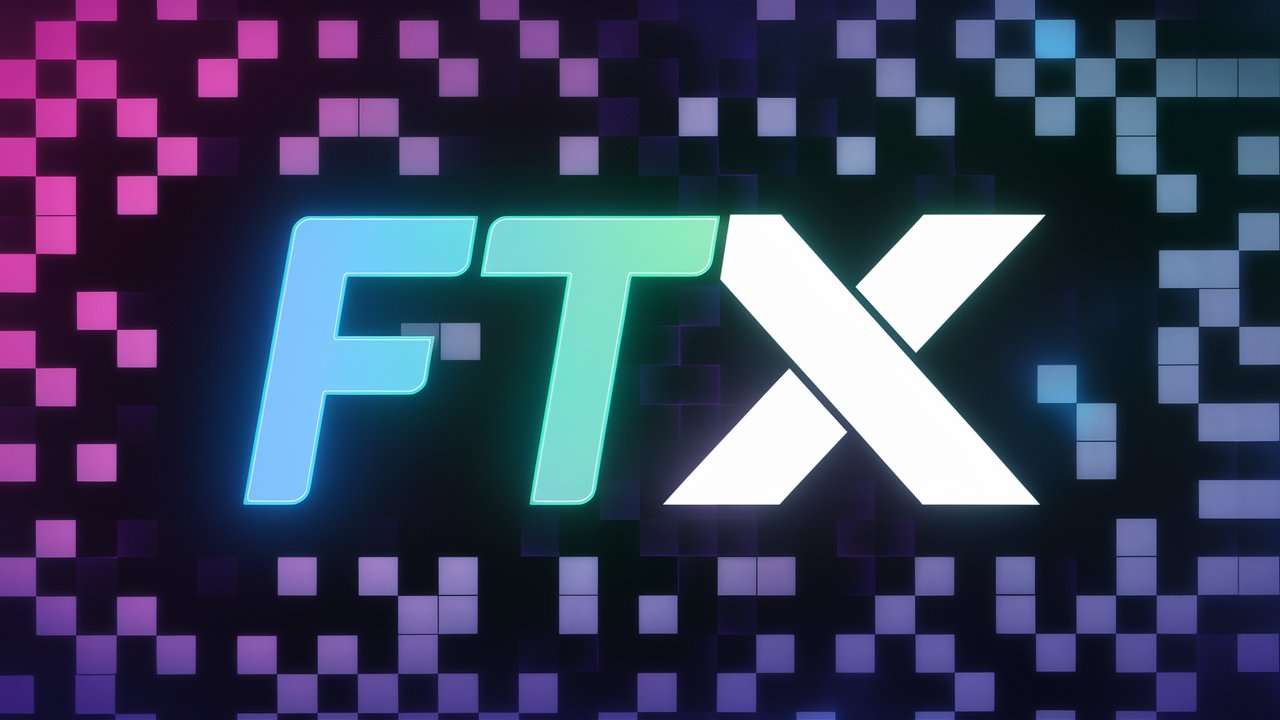
Passive crypto income is the earnings generated by holding cryptocurrencies or crypto-related assets over time without actively trading or participating in day-to-day market activities. This concept has gained significant traction in the cryptocurrency market due to its potential for steady returns and reduced involvement.
Index funds and Exchange-Traded Funds (ETFs) have become preferred vehicles for achieving passive crypto income. These investment options offer diversified exposure to various cryptocurrencies and blockchain assets, spreading risk and enhancing the potential for consistent returns.
The cryptocurrency market’s inherent volatility makes index funds and ETFs an attractive choice for investors looking for a more stable approach to crypto income.
What are ETFs and Index Funds?
ETFs (Exchange-Traded Funds) are investment funds traded on stock exchanges, much like individual stocks. They can track various assets, including stocks, bonds, commodities, or even cryptocurrencies. ETFs are also designed to mimic the performance of an underlying index or asset but can be traded throughout the trading day. ETFs provide investors with a flexible and diversified approach to investing, allowing them to buy and sell daily shares at market prices.
Index Funds are investment funds designed to replicate the performance of a specific market index, such as the S&P 500. These funds aim to track the Index’s holdings and returns passively. The primary purpose of index funds is to offer investors a low-cost and diversified way to invest in a particular market or sector. They are managed by fund managers who aim to match the Index’s performance rather than actively selecting individual securities.
Advantages of Index Funds and ETFs
Diversification: Both index funds and ETFs offer instant diversification across multiple assets, reducing individual stock risk.
Cost-Efficiency: These investment vehicles typically have lower expense ratios than actively managed funds, translating into cost savings for investors.
Liquidity: ETFs, in particular, provide intraday trading, making it easy to enter or exit positions enhancing liquidity.
Transparency: Investors can easily track the underlying Index or assets’ performance as it’s publicly disclosed.
Tax Efficiency: ETFs are often tax-efficient due to their unique structure, resulting in fewer capital gains taxes.
Flexibility: ETFs cover various asset classes, enabling investors to tailor their portfolios to specific strategies or market segments.
Benefits of Passive Crypto Income
Passive crypto income is the earnings from cryptocurrency investments without active trading or constant monitoring. This approach offers several advantages over active trading in the crypto market.
Reduced Stress and Time Commitment
Earning passive crypto income requires minimal active involvement. Investors can set up their portfolios, utilize automated strategies, and enjoy consistent returns without the stress and time commitment associated with day trading.
Diversification
Passive crypto income methods often involve diverse investment portfolios. This diversification spreads risk and minimizes the impact of market volatility compared to active traders who might concentrate their assets on a few assets.
Lower Trading Costs
Active traders frequently face substantial trading fees and expenses. In contrast, passive income strategies generally have lower costs, preserving a higher portion of earnings.
Steady Income Streams
Passive crypto income can provide a predictable and regular income stream, making it suitable for investors seeking stable financial returns.
Reduced Emotional Impact
Active trading often leads to emotional decisions influenced by market fluctuations. Passive income methods, on the other hand, reduce emotional involvement, promoting rational decision-making.
Tax Benefits
Long-term passive investments can offer tax advantages over short-term trading, potentially reducing tax liabilities.
Diversification in Crypto: Mitigating Risk
Diversification plays a crucial role in cryptocurrency investments as a key strategy to manage risk effectively. Cryptocurrencies are known for their high volatility, making diversification an essential risk management tool. This strategy entails spreading investments across various assets, reducing exposure to the price fluctuations of any single cryptocurrency.
The primary objective of diversification in cryptocurrency investments is risk reduction. In the volatile crypto market, individual cryptocurrencies can experience significant price swings. By diversifying across different assets, investors aim to mitigate the impact of a potential market downturn. If one cryptocurrency faces a decline, others in the diversified portfolio may perform better, offsetting losses and preserving the overall capital.
In essence, diversification acts as a protective measure, bolstering the resilience of a cryptocurrency portfolio against the inherent uncertainties and volatility in the digital asset space. Investors employ this strategy to achieve a balanced and stable investment approach, acknowledging the unpredictable nature of cryptocurrency markets.
Index Funds and ETFs: Providing Diversified Exposure
Index Funds
The cryptocurrency Index funds market is designed to replicate the performance of a specific cryptocurrency index. These funds hold a diversified portfolio of cryptocurrencies that mimic the Index’s composition. Investing in an index fund provides exposure to a range of cryptocurrencies, reducing the risk associated with individual asset selection.
Exchange-traded funds (ETFs)
Cryptocurrency ETFs are similar to index funds but trade on exchanges like stocks. They offer diversified exposure to various cryptocurrencies within a single investment vehicle. ETFs enable investors to buy and sell cryptocurrency baskets, further enhancing diversification easily.
Related: Offline Staking: A Secure Way to Participate in Blockchain Networks
Using Index Funds for Passive Crypto Income
Index funds offer a convenient way to generate passive income in the cryptocurrency market. Start by;
Choosing a Cryptocurrency Exchange
Start by selecting a reputable cryptocurrency exchange. Popular choices include Coinbase, Binance, and Kraken. Ensure the chosen exchange supports cryptocurrency index funds.
Create an Account
Sign up for an account on the selected exchange. Provide the necessary personal information and complete any required verification processes.
Fund Your Account
Deposit funds into your exchange account. Most exchanges accept deposits in fiat currencies like USD, EUR, or others, which you can later use to invest in index funds.
Explore Index Funds
Browse the exchange’s offerings to identify cryptocurrency index funds. These funds typically track the performance of a specific cryptocurrency index, such as the S&P 500 Crypto Index.
Invest in Index Funds
Choose the index fund that aligns with your investment goals and risk tolerance. Enter the amount you wish to invest, review the details, and confirm the transaction.
Monitor Your Investment
Regularly monitor the performance of your chosen index fund. Many exchanges provide detailed statistics and charts to help you track your passive income.
Platforms Offering Cryptocurrency Index Funds
Coinbase: Coinbase offers a user-friendly platform with various cryptocurrency index funds.
Binance: Binance provides various index funds catering to different investment preferences.
Kraken: Kraken offers cryptocurrency index funds and a strong security emphasis.
How to Use ETFs for Passive Crypto Income
Exchange-traded funds (ETFs) provide a simple and effective way to generate passive income in the cryptocurrency market. Start by;
Choosing a Cryptocurrency Exchange
Begin by selecting a reputable cryptocurrency exchange that offers crypto ETFs. Some well-known exchanges include Coinbase, Binance, and Kraken.
Create an Account
Sign up for an account on the chosen exchange, provide the required personal information, and complete the verification process.
Deposit Funds
Deposit funds into your exchange account. You can typically fund your account using fiat currencies like USD or EUR.
Research Crypto ETFs
Explore the exchange’s offerings to find crypto ETFs. Look for ETFs that align with your investment goals and risk tolerance. Examples of popular crypto ETFs include:
Grayscale Bitcoin Trust (GBTC): This ETF provides exposure to Bitcoin, allowing investors to benefit from its price movements.
Amplify Transformational Data Sharing ETF (BLOK): Focused on blockchain technology, this ETF offers diversified exposure to crypto-related companies.
The Bitwise 10 Crypto Index Fund (BITW) tracks a diversified index of the top cryptocurrencies, providing exposure to multiple digital assets.
Invest in Crypto ETFs
Choose the crypto ETF that suits your investment strategy. Enter the desired investment amount, review the details, and confirm the purchase.
Monitor Your Investment
Regularly check the performance of your chosen crypto ETFs on the exchange’s platform. You can monitor price changes, dividends, and overall returns.
Passive Income Strategies with Index Funds and ETFs
Passive income strategies using index funds and Exchange-Traded Funds (ETFs) are popular for investors to build wealth steadily. These are various strategies for maximizing passive income;
Diversification with Index Funds and ETFs
Diversifying one’s portfolio by investing in a mix of index funds and ETFs can help spread risk. These funds offer exposure to a wide range of assets, including stocks, bonds, and commodities, reducing the impact of individual asset volatility.
Regular Contributions
Setting up automatic contributions to index funds and ETFs consistently allows investors to benefit from dollar-cost averaging. This strategy involves buying more shares when prices are low and fewer when prices are high, potentially increasing long-term returns.
Dividend Income
Many index funds and ETFs focus on dividend-paying stocks. Investors can earn regular dividend income, which can be reinvested or used as a source of cash flow.
Capital Appreciation
Some index funds and ETFs are designed for capital appreciation. These funds aim for long-term growth in the value of assets held. Investors can benefit from price appreciation over time.
Leveraging DRIPs
Dividend Reinvestment Plans (DRIPs) allow investors to reinvest dividends from their holdings automatically into the same fund or ETF. This compounding effect can significantly increase returns over time.
Tax Efficiency
Index funds and ETFs are often tax-efficient investment options. They generate fewer capital gains, reducing the tax burden on investors, especially in taxable accounts.
Regular Review and Adjustments
Investors should periodically review the fund’s portfolio to ensure it aligns with their financial goals and risk tolerance. Adjustments may be needed based on changing circumstances.
Risks and Considerations in Crypto Index Funds and ETFs
Investing in crypto index funds and Exchange-Traded Funds (ETFs) can offer diversification and convenience but comes with risks.
Market Volatility
Risk: Cryptocurrency markets are highly volatile, leading to sudden price fluctuations that can impact the value of index funds and ETFs.
Risk Management: Investors should be prepared for market swings and consider a long-term investment horizon.
Regulatory Uncertainty
Risk: The regulatory environment for cryptocurrencies is evolving, and changes in regulations can affect the legality and operations of crypto index funds and ETFs.
Risk Management: Stay informed about regulatory developments and invest through reputable platforms that adhere to compliance standards.
Counterparty Risk
Risk: Some funds may involve third parties, exposing investors to counterparty risk if these parties fail to fulfill their obligations.
Risk Management: Choose funds with transparent operations and strong custodial arrangements.
Liquidity Risk
Risk: Liquidity can be an issue, especially in smaller or less-known crypto funds, challenging buying or selling shares at desired prices.
Risk Management: Opt for funds with sufficient trading volumes and liquidity.
Tracking Error
Risk: Due to tracking errors, ETFs may not perfectly track their underlying Index, resulting in performance deviations.
Risk Management: Assess the historical tracking performance of an ETF before investing.
Concentration Risk
Risk: Some index funds or ETFs may have a concentration of assets in a particular cryptocurrency or sector.
Risk Management: Diversify across multiple funds to reduce concentration risk.
Also read: What is Address Poisoning in Crypto and How to Avoid Them?
Conclusion
To conclude, readers are encouraged to explore the world of passive income in cryptocurrencies through index funds and ETFs. It offers a promising avenue for individuals looking to harness the potential of the crypto market while minimizing risks. Readers can embark on financial growth and security by staying informed and making informed investment choices.
Discover the crypto market’s opportunities through index funds and ETFs, and take the first step towards a passive income stream in this exciting and evolving landscape.
Disclaimer: This information is for educational purposes only and should not be considered financial advice. It is recommended to consult with a financial advisor before making any investment decisions.
Frequently Asked Questions (FAQs)
What is passive income in the crypto space?
Passive income in crypto refers to earning money without actively trading or working. It involves staking, yield farming, or lending your crypto assets to generate returns.
How can one earn passive income from cryptocurrencies?
Several ways to earn passive income from cryptocurrencies include staking your tokens, participating in liquidity mining, running lightning crypto nodes, yield farming, and lending crypto assets.
What are the risks associated with crypto passive income?
Risks in crypto passive income include market volatility, smart contract vulnerabilities, and potential loss of principal. It’s important to understand these risks before engaging in passive income strategies.
Are crypto passive income opportunities suitable for beginners?
Crypto passive income opportunities cater to investors of varying levels of experience. While some methods may be more complex, others are beginner-friendly, making them accessible to many investors.
Is there a minimum investment required to start earning passive income with cryptocurrencies?
The minimum investment required varies depending on the chosen method. Some options may require a substantial investment, while others can be started with a modest amount. It’s essential to research each method’s requirements before getting started.
Discover more from The African Crypto
Subscribe to get the latest posts to your email.
















